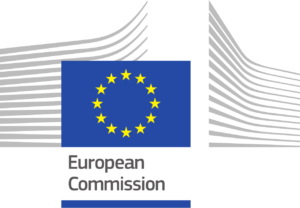The European Commission (Commission) published it’s latest draft of detailed drone rules last week. Here’s what’s inside: and why the Drone Manufacturers Alliance Europe (DMAE) is on board.
The Commission’s latest draft implementing rules for operational and technical requirements builds on EASA recommendations, and proposes a groundwork that will grant member states the ability to implement security measures as they see fit – but allows for cooperation and exchange of information that will help support the industry across Europe.
Risk-Based
The proposed framework is centered around the concept of risk-based regulations, and proposes three categories of operations: “open”, “specific”, and “certified.” “The rules and procedures applicable to UAS operations should be adapted to the nature and risk of the operation or activity, the operational characteristics of the unmanned aircraft concerned and the characteristics of the area of operations such as the population density, surface characteristics, and the presence of buildings,” says the draft. “…Proportionate risks mitigation requirements should be applicable to UAS operations according to the level of risk involved, the operational characteristics of the unmanned aircraft concerned and the characteristics of the area of operation.”
UTM, Remote ID and Tracking
The draft is geared towards full integration of unmanned aircraft, and incorporates requirements of “U-Space,” Europe’s Unmanned Traffic Management (UTM) system. “While the “U-Space” system including the infrastructure, services and procedures to guarantee safe UAS operations and supporting their integration into the aviation system is in development, this Regulation should already include requirements for the implementation of three foundations of the U-Space system, namely registration, geo- awareness and remote identification which will need to be further completed,” says the draft. Additionally, the proposal says that drone registrations should be stored in “digital, harmonized, interoperable national registration systems” which could be shared between member states.
Noise
One element of the proposal brings up an issue important to communities but often overlooked by the drone industry – noise. This element of the proposal has caused a stir in some online drone communities, who fear that it could create a significant barrier for recreational flight. “Unmanned aircraft noise and emissions should be minimized as far as possible taking into account the operating conditions and various specific characteristics of individual Member States, such as the population density, where noise and emissions are of concern,” says the draft. “In order to facilitate the societal acceptance of UAS operations, Regulation[….] [DA] includes maximum level of noise for unmanned aircraft operated close to people in the open category.”
The new draft, however, is a step forward in implementing a European set of drone regulations – and the DMAE has issued a statement in full support of the proposal.
“The Commission is seeking public consultation on those rules, which are built on the European Aviation Safety Agency’s (EASA) Basic Regulation,” says the DMAE statement. “They create a harmonized framework for local and national authorities to identify and monitor airborne drones, clearing the way for businesses, governments, educators and others to safely use drones in their work.”
“From the start, we have called on European regulators to develop reasonable implementing rules, and they have risen to that challenge. It’s been a long journey, but we are excited to see a good text taking shape. Commissioner Bulc, her team at DG MOVE and colleagues at DG GROW deserve a round of applause for balancing the interests of all stakeholders. At this point, I think everyone is sitting on the edge of their seats,” said Paula Iwaniuk of DMAE.
“Specifically, DMAE recognises the positive developments on remote electronic identification, the tiered approach to noise level reduction, sensible transition periods and more EU-harmonisation. Once these rules are formally adopted, Europe will have common drone rules that will strengthen today’s visual-line-of-sight (VLOS) flights and pave the way for beyond-visual-line-of-sight (BVLOS) operations.”
Iwaniuk added: “There are some areas that need to be addressed, so we will use the consultation to do just that. Our objectives are simple. First, to ensure that today’s drones and drone operators can fly tomorrow with minimal disruption. Second, to give Europe and Member States the full spectrum of benefits that come from drone technology, while protecting public safety.”
The feedback period on the draft will remain open until November 5, 2018.
Miriam McNabb is the Editor-in-Chief of DRONELIFE and CEO of JobForDrones, a professional drone services marketplace, and a fascinated observer of the emerging drone industry and the regulatory environment for drones. Miriam has a degree from the University of Chicago and over 20 years of experience in high tech sales and marketing for new technologies.
Email Miriam
TWITTER:@spaldingbarker
Subscribe to DroneLife here.
https://dronelife.com/2018/10/17/europes-plan-to-id-and-monitor-drones-and-why-the-drone-industry-approves/
 Unmanned Aerial Vehicle The latest drone news
Unmanned Aerial Vehicle The latest drone news




